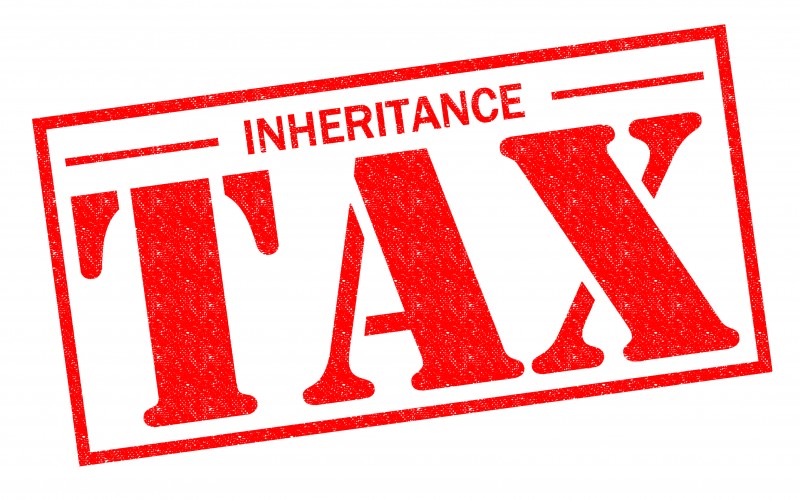Introduction about the Inheritance Tax
Overview
Inheritance tax (IHT) and Capital gains tax (CGT) are tricky taxes, each of them having their own different methods of calculation, exemptions and reliefs. As a result, in respect of the same trisection it seems like a step too far to deal with both of them (Investment Guide, 2013). It is a detailed, lengthy and technical task to administer an estate after someone has died. In present scenario the higher numbers of complaints about administration of estates are being received by solicitors than any other single issue. According to HM Revenue and Customs in the middle of past decade about 6% of the total complaints were liable to inheritance tax. But the number of such complaints has fallen since the fall in property values and introduction of transferable nil-rate band in 2007 (HM Revenue & Customs, 2013).While administering an estate there are three principles that must be considered for UK taxes Income tax, inheritance tax and capital gain tax.

Capital Gain Tax: The capital gain tax is payable on the basis of gain or profit that someone has made by selling, giving away or otherwise disposing of something. It applies on assets owned by someone such as property or shares. The bill of capital gain can be reduced by the help of a tax-free allowance and some additional reliefs. Most of the assets are liable to capital gain tax on sell either they are in UK or overseas. Some Assets are exempt such as personal possessions disposed for £6,000 or less, main home and car. Making a gift to a child or to any other company or individual will lead to capital gain tax but on the other hand gift made to spouse, charity or civil partner won’t (Booth and Copper, 2011). Any inherit asset is not liable to tax under the head of capital gain tax until the asset is disposed or sold. The assets can be transferred between partners on divorce, separation or while dissolving a civil partnership. The liability of Taxation law is depends on whether the person is living together at the time and the date of transfer.
The annual tax free allowance for capital gains tax for the year 2012-13 is: £10,600 for each individual and £5,300 for most trustees.
Inheritance Tax: Replacing the Capital Transfer Tax the Inheritance Tax was introduced with the effect from 18 March 1986 in UK. When a person’s estate including possessions and property is worth more than the threshold that is £325,000 on their death the Inheritance tax is due (Butler, 2009). For anything above this threshold the rate of Inheritance tax is 40%. But if more than 10% of the estate is left to charity then the rate can be reduced to 36%. This tax is paid by personal representative or executer for the person who has died by using the funds from the estate (UK Inheritance Tax Guide, 2012). The interest is has to be paid if the tax is not paid within six months form the end of the month in which the person died. Anything that is left for civil partner or spouse who has their permanent home in the UK is not taxable including any gift given whiles the person was alive. Any gifts that are made to museums, universities, charities, the National trust and Community Amateur Sports club are exempt (Prabhakar, Rowlingson and Sruart, 2008).
Capital gain tax deals with the transfer of any kind of assets worldwide on the other hand Inheritance tax deals with what a person leave in their will after death and lifetime transfer of the assets and wealth. This present study is going to deal with the interaction of inheritance tax and capital gain tax. This study will provide the comprehensive understanding of situations when both taxes interact.
Structure of the Research: As all the chapters are interconnected this present research will progress in a sequential manner.
The structure of research is as follows:
- Introduction – This will be the very first part of the research that will provide the overview of entire study. Along with overview this part will also provide the brief introduction of focus and purpose, significance of the research and framework of analysis.
- Literature Review – This part of the study will provide the introduction with previous studies that have been conducted on this subject matter. This chapter will present research results of different researchers and views of different authors about this field of study. A number of Tax journals and Tax websites would be used for proving better understanding of study.
- Research Methodology – This phrase of the report will present the various methodologies that have been applied for data collection and their analysis. It will also include the aim and objective of the research along with research questions, techniques of data collection, and methods of data analysis, research approach, possible limitations and ethical considerations (Scandura and Williams, 2000).
- Data Analysis & Findings – In this section of research collected data would be analysed. In order to generate the inferences this part basically involves the assessment of results (Heeks and Bailur, 2007).
- Conclusion & Recommendations – This would be the final chapter of the research that will indicate the conclusions based on findings and recommendations.
Focus and Purpose of Research
Focus: The major focus of this research is on interaction between capital gain tax and inheritance tax. The research will focus on analysing the situations when both these taxes interact. Capital gain tax deals with the transfer of assets worldwide but Inheritance deals with the transfer of wealth and assets due to death. Sometime when there is interaction between both the taxes it becomes hard that which implication works better (Geursen and Ethrenreich, 1998).
Aim: To analyse the situation when both the taxes interact along with analysing the need of Inheritance tax in existence of Capital














